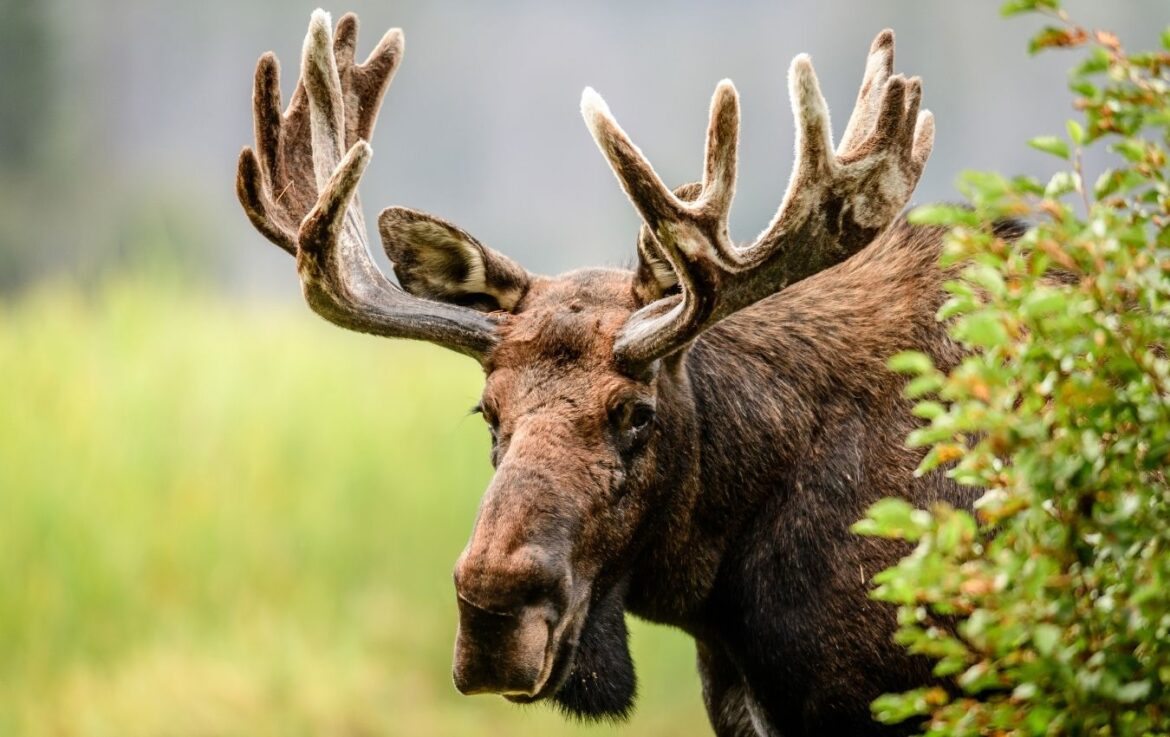Table of Contents
The moose (Alces Alces) is the largest member of the deer family (Cervidae), which also includes deer, elk, and caribou. However they have several distinctly different characteristics, which are described below.
Physical Characteristics
Male moose, or bulls, are notable for their very large and impressive paddle-shaped antler configurations, unlike any other deer in North America. They are big, somewhat awkward looking animals perhaps more known for their long legs and droopy, overhanging noses.
Moose are impressive animals simply for their overall body size. Mature bulls have been known to reach shoulder heights of over 7 feet tall and weigh as much as 1800 pounds. All moose have a large flap of skin, called a dewlap or bell, dangling from underneath their chin. A very unique and interesting bodily feature, biologists are still not certain as to what purpose this dewlap serves.
The body color of a moose will typically vary slightly between a brown to a dark blackish-brown depending upon the season; with the legs being a lighter color than the rest of their body, sometimes almost completely white.
Habitat
Moose typically dwell in brushy, forested areas that offer plenty of cover. Flourishing brushy areas near lakes, ponds, or other sources of water are ideal. They prefer to stay near these lush green areas in summer as it helps them to regulate their body temperatures. Moose can be spotted both in elevated timber forests on mountainsides and brushy, marsh lowlands in valleys and drainages.
Diet
Moose feed on many different types of plant life. At times they can be seen in or near lakes and ponds munching on aquatic plants, and other times they may nibble on green leaves, shrubs, and buds off trees in the earlier parts of the year. When moose are hunted during the fall, their diet consists more of woody brush, twigs, and bark off of willow, birch, and aspen trees. This is often referred to as Browse.
Reproduction
The moose breeding season, or rut, typically begins around mid-September and continues until mid-October. It is at this time that mature bulls will become very territorial and aggressive towards bulls as they compete for attention from the females, also called cows. Bulls can often be observed raking and destroying brushy shrubs or trees with their antlers in incredible expressions of dominance towards other moose.
During the rut, both bulls and cows are very vocal. Bulls have deep, guttural grunt they use to assert their presence and call to the cows. Cows, in their desire to mate, will let out loud, nasally moans in an attempt to get a bulls attention. Because of the flurry of activity that occurs during rut, this is one of the best and most exciting times in which to hunt moose.
Baby moose, or calves, are born the following spring. A mother moose will usually give birth to one, two, or even three calves. Three calves are rare, but two at a time are not uncommon. At birth each calf will weight about 30lbs, and will grow very rapidly gaining as much as 2 lbs a day. The calves will usually remain with their mother until they are about 1 ½ years old.

